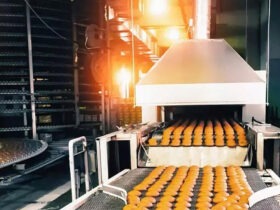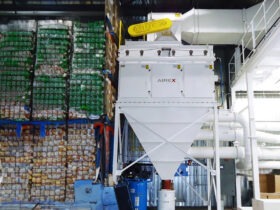FOOD PROCESSING
Issues Encountered During Our Interventions
Humidity
Humidity level control is vital for the production of this application type.
Temperature
Some tasks require precise temperature control throughout product processing.
Dust
Particles generated by this application field accumulate quickly and must be addressed efficiently.
Air Change
To ensure ambient air quality standards, multiple air exchanges per hour are required.
High Energy Consumption
Processes related to this application field consume high amounts of energy.
Explosion Hazard
Dust particulate from some materials may be flammable and/or combustible.
Food Processing And Its Contaminants: What Do You Need To Know?
Storing and handling grains, cooking foods, fermenting and processing fish-, meat- and poultry-based products: you know as well as we do that your processes generate a great deal of dust. Depending on your operations, a number of aspects come into play:
- Is there a risk of deflagration associated with bioaerosols? Since organic matter is highly combustible, it is a potential source of fire and explosion.
- What types of particles are found in your facilities? Have you assessed the composition of the airborne contaminants and how they move around?
- Do you adequately control moisture to prevent mold? Food safety and cross-contamination are other major issues to monitor!
Are You Aware Of The Risks Associated With Your Processes?
Whether you market grains, animal feed, flour, sugar, or vegetable oil from compressed soybeans or canola, you must control your particle emissions. Since they can cause respiratory problems, they must be captured in order to protect your workers’ health!
The dust collector’s filters and ducts becoming clogged is another challenge to deal with. Often highly sensitive to moisture (hydrophilic), the particles involved in your industry agglomerate and can eventually plug your system. That’s why it’s important to inspect and clean your entire dust collector and ductwork!
A watchful eye must also be kept on the speed at which the dust is conveyed: fast enough to prevent it from sticking to surfaces, but not too fast because speed increases friction, shock and, therefore, the risk of explosion. You need to find the right balance and adjust the dust collection system to your production.





